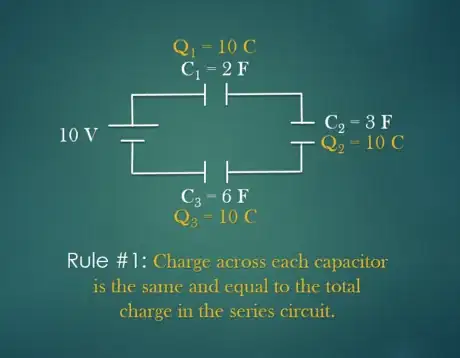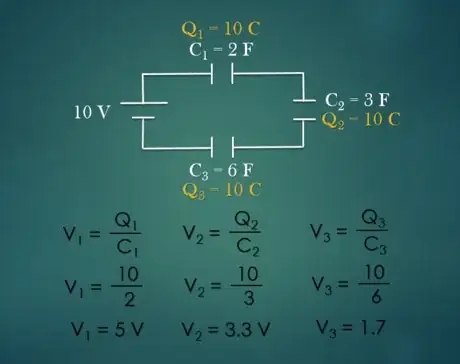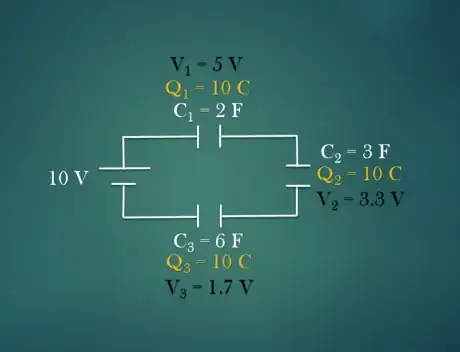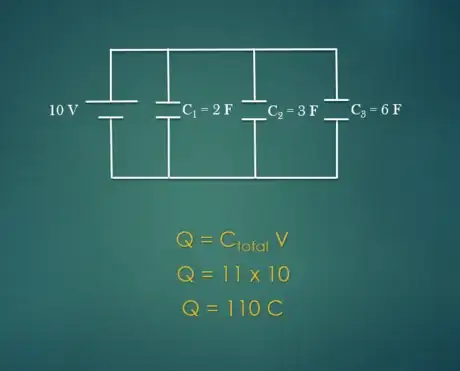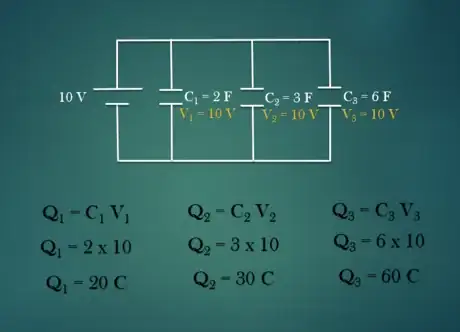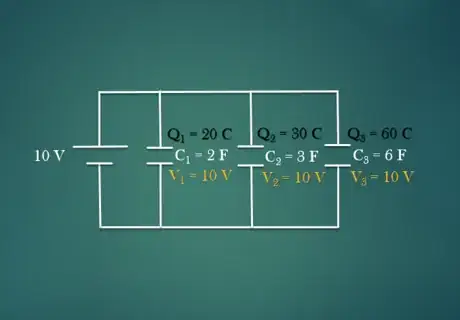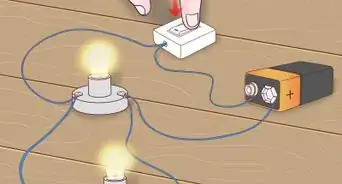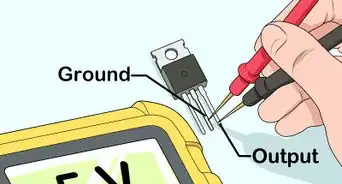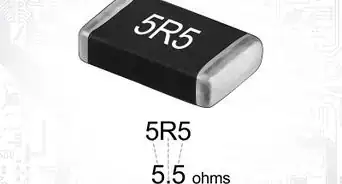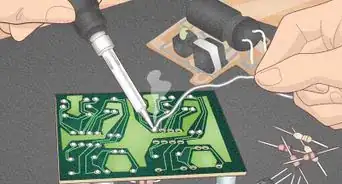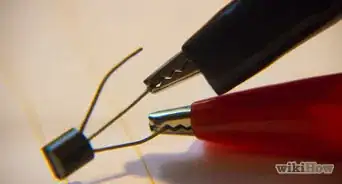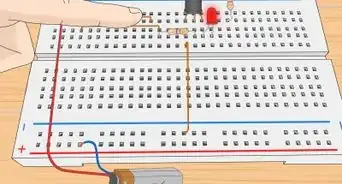X
wikiHow is a “wiki,” similar to Wikipedia, which means that many of our articles are co-written by multiple authors. To create this article, volunteer authors worked to edit and improve it over time.
This article has been viewed 64,800 times.
Learn more...
What does solving a capacitor circuit really mean? Well, it’s just finding the charge and voltage across each capacitor in a circuit. There are some simple formulas and rules that would allow us to solve two different types of capacitor circuits: series circuit and parallel circuit. Let’s get started!
Method 1
Method 1 of 2:
Series Circuit
-
1Identify the circuit. A series circuit has only one loop with no branching paths. Capacitors in the circuit are arranged in order within the same loop.
-
2Calculate the total capacitance. Given the voltage and capacitor values for each, find the total capacitance. To calculate the total capacitance in a series circuit, use the formula .
- For example: A series circuit has three different capacitors of value C1 = 2F, C2 = 3F, C3 = 6F. Plug in to the formula and solve for CT. Adding the fraction and taking the inverse, CT = 1F.
-
3Calculate the total charge. The total charge in a circuit depends on the total voltage and the total capacitance in a circuit. This relationship is given by the equation .
- For example: The circuit has a total capacitance of 1 F and total voltage of 10 V. Plug in the given to the equation and solve for Q:
-
4Find the charge in each capacitor. For a series circuit, charge across each capacitor is the same and equal to the total charge in the circuit.
- For example: The total charge in the circuit is 10 C. Then the charge in C1 is 10 C, C2 is 10 C and C1 is 10C.
-
5Calculate the voltage across each capacitor. Rearranging the equation to , the voltage across each capacitor can be calculated.
- For Example: The charge is 10 C for all capacitors and capacitance values are 2 F, 3 F and 6 F respectively.
- Voltage across first capacitor is V1 = Q1/C1 = 10/2 = 5V
- Voltage across second capacitor is V2 = Q2/C2 = 10/3 = 3.3V
- Voltage across third capacitor is V3 = Q3/C3 = 10/6 = 1.7 V
- Note that the sum of individual voltage equals the total voltage in the series circuit.
-
6Draw and label each capacitor with its charge and voltage. Once the voltage and charge in each capacitor is calculated, the circuit is solved. Label these information in the circuit drawing to keep everything organized. .
Advertisement
Method 2
Method 2 of 2:
Parallel Circuit
-
1Identify the circuit. A parallel circuit has more than one loop and all are connected to same voltage. The capacitors in the circuit are arrange in parallel to each other.
-
2Calculate the total capacitance. The sum of all the capacitance value in a parallel circuit equals to the total capacitance in the circuit. This is given by the equation CT=C1+C2+C3. .
- For example: A parallel circuit has three capacitors of value: C1 = 2F, C2 = 3F, C3 = 6F. Then the total capacitance, CT is 2+3+6 = 11 F.
-
3Calculate the total charge. The total charge in a circuit depends on the total voltage and the total capacitance in a circuit. This relationship is given by the equation .
- For example: The circuit has a total capacitance of 11 F and total voltage of 10 V. Plug in the givens to the equation: Q = 11*10 = 110 C.
-
4Find the total voltage across each capacitor. In a parallel circuit, the voltage across each capacitor is the same and equal to the total voltage in the circuit.
- For example: The total voltage in the circuit is 10 V. Then the voltage across V1 is 10 V, V2 is 10 V and V3 is 10 V.
-
5Calculate the charge in each capacitor. Once the voltage is identified for each capacitor with a known capacitance value, the charge in each capacitor can be found using the equation .
- For example: The voltage across all the capacitors is 10V and the capacitance value are 2F, 3F and 6F respectively.
- Charge in first capacitor is Q1 = C1*V1 = 2*10 = 20 C.
- Charge in first capacitor is Q2 = C2*V2 = 3*10 = 30 C.
- Charge in first capacitor is Q3 = C3*V3 = 6*10 = 60 C.
-
6Draw and label each capacitor with its charge and voltage. Once the voltage and charge in each capacitor is calculated, the circuit is solved. Label these information in the circuit drawing to keep everything organized.
Advertisement
Community Q&A
-
QuestionHow can I find the distance between plates?
 Community AnswerIf you want to find the distance between two plates, you'll need to know the area of two plates and the capacitance of the capacitor. Then we can find the 'd' (distance) of C.
Community AnswerIf you want to find the distance between two plates, you'll need to know the area of two plates and the capacitance of the capacitor. Then we can find the 'd' (distance) of C.
Advertisement
About This Article
Advertisement








